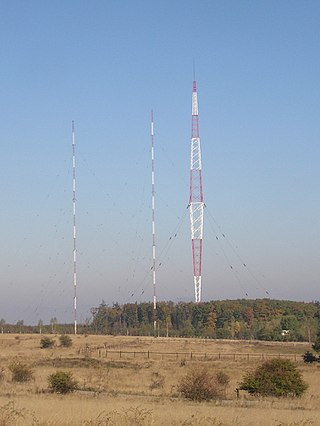This article may need to be rewritten to comply with Wikipedia's quality standards.(July 2021) |
Communications in the Cayman Islands
This article may need to be rewritten to comply with Wikipedia's quality standards.(July 2021) |
Communications in the Cayman Islands
Telephones – main lines in use: 37,400 (2009) [1]
Telephones – mobile cellular: 99,900 (2004) [1]
Telephone system:
Satellite earth station – 1 Intelsat (Atlantic Ocean) (2007) Intelsat (Atlantic Ocean) [1]
Radio broadcast stations: AM 0, FM 17, shortwave 0 (2006)
Radios: 36,000 (1997)
Television broadcast stations: Cayman27
Internet Service Providers (ISPs):Four companies offer internet service in the islands with in fixed configurations or mobile or both:
Country code (Top-level domain): .ky
Telecommunications in Antigua and Barbuda are via media in the telecommunications industry.
This article is about communications systems in Anguilla.
Country Code: +1284
International Call Prefix: 011

Telecommunications in Bulgaria include radio, television, fixed and mobile telephones, and the Internet.
The technical regulator of communications in Chile is the Ministry of Transportation and Telecommunications, through the Undersecretariat of Telecommunications (Subtel).
Telecommunications in Haiti Internet, radio, television, fixed and mobile telephones.
Telecommunication in Honduras started in 1876 when the first telegraph was introduced, continued development with the telephone in 1891, radio in 1928, television in 1959, the Internet in the early 1990s, and cellphones in 1996.
Communications in Indonesia has a complex history due to the need to reach an extended archipelago of over 17,500 islands. The once important non-electronic communication methods of the past have given way to a considerable telecommunications infrastructure in contemporary Indonesia.
The most important telecommunications in Italy are telephone, radio, television and the Internet.
Telecommunications in Jamaica include the fixed and mobile telephone networks, radio, television, and the Internet.
Telecommunications in Kuwait provides information about the telephone, Internet, radio, and television infrastructure in Kuwait.
Telecommunications in Saint Vincent and the Grenadines is accomplished through the transmission of information by various types of technologies within Saint Vincent and the Grenadines, mainly telephones, radio, television, and the Internet.
Telecommunications in Tonga include radio, television, telephones, and the Internet.
Telecommunications in Trinidad and Tobago include radio, television, fixed and mobile telephones, and the Internet.
In Venezuela the first law on telecommunications was approved in 1940. It identified the responsibility of the state in regard to telephone and other telecommunication systems, including radio and television services.
Communications in Barbados refers to the telephony, internet, postal, radio, and television systems of Barbados. Barbados has long been an informational and communications centre in the Caribbean region. Electricity coverage throughout Barbados is good and reliable. Usage is high and provided by a service monopoly, Barbados Light & Power Company Ltd..
Telecommunications in Panama includes radio, television, fixed and mobile telephones, and the Internet.
Telecommunications in Guyana include radio, television, fixed and mobile telephones, and the Internet. Early telecommunications were owned by large foreign firms until the industry was nationalized in the 1970s. Government stifled criticism with a tight control of the media, and the infrastructure lagged behind other countries, Guyana Telephone and Telegraph Company (GT&T) holding a monopoly on most such services. In a 2012 census report on Guyanese households, 55.5% had a radio, 82.7% had a television, 27.8% had a personal computer, and 16.2% had internet at home, 49.3% had a telephone landline, and 70.6% had a cellular phone.
Communications in Cape Verde.
LIME, an acronym for 'Landline, Internet, Mobile, Entertainment', was a communications provider owned by the British based Cable & Wireless Communications for its operations in Anguilla, Antigua & Barbuda, Barbados, British Virgin Islands, Cayman Islands, Dominica, Grenada, Jamaica, Montserrat, St. Kitts & Nevis, St. Lucia, St. Vincent & the Grenadines and Turks & Caicos in the Caribbean.